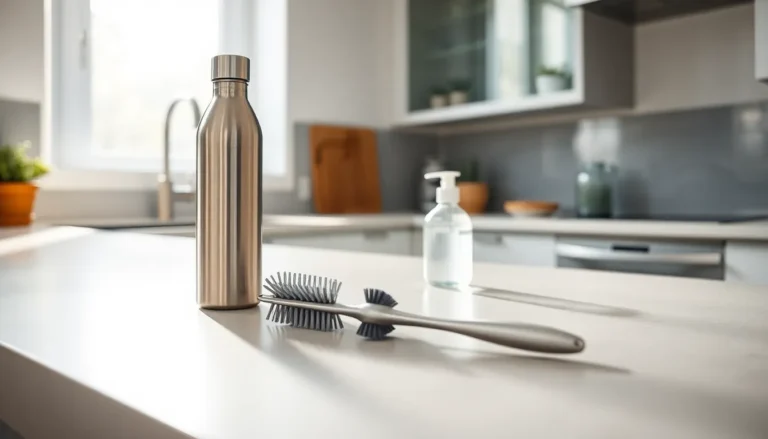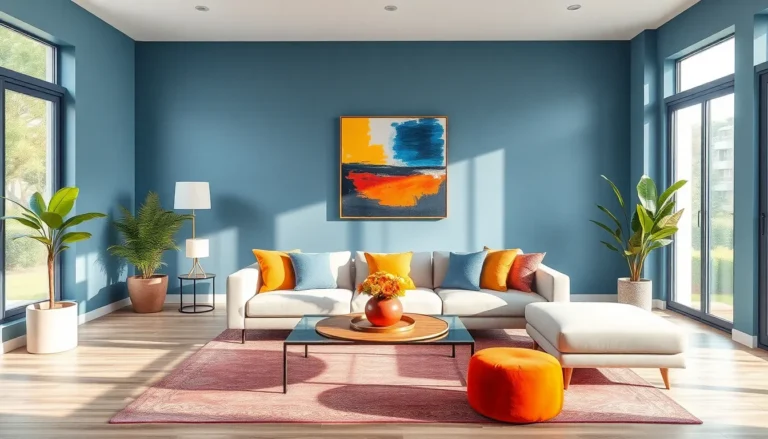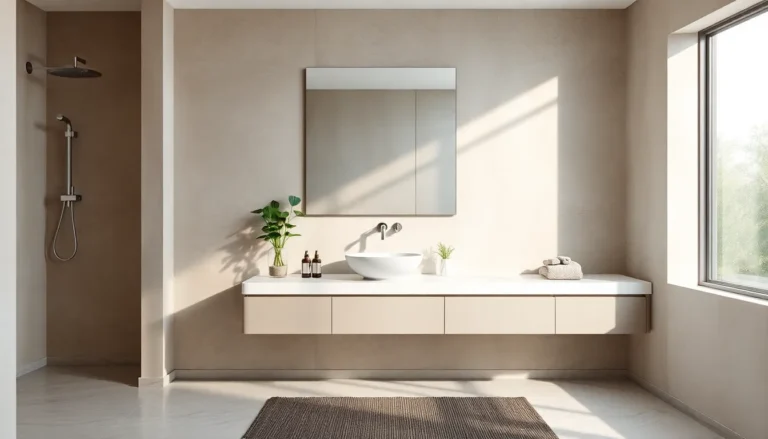Table of Contents
ToggleIn the vast universe of interior spaces, where creativity meets utility, decor design construction reigns supreme. Imagine entering a room where every color promotes calm, every texture feels inviting, and functionality isn’t sacrificed on the altar of aesthetics. It’s a delightful balance, like coffee and donuts but way more sophisticated. Whether refreshing a cramped apartment or crafting an expansive mansion, understanding the nuances of decor design is key. Let’s jump into this captivating world and see how to create spaces that not only look great but feel like home.
Understanding Decor Design

Key Elements of Decor Design
Decor design feels like orchestrating a grand symphony. It encompasses colors, textures, shapes, and spaces, not unlike the ingredients in a delicious recipe. Color establishes mood: texture adds interest: the right shapes can open up or cozy up a space.
To start, these key elements work harmoniously to create an immersive experience. Think of color palettes that invoke serenity, soft blues and greens, or vibrant hues that energize. Textures can range from smooth and sleek to rough and tactile, ensuring the space invites touch while looking visually appealing.
Importance of Functionality and Aesthetics
Equally vital in decor design is the marriage between functionality and aesthetics. A stunning design may dazzle the eyes, but if it lacks purpose, it quickly becomes impractical. The ideal design allows individuals to navigate efficiently while enjoying the beauty surrounding them. So, when creating spaces, one must always consider how it will be used. Does a room invite relaxation? Can it help easy interaction? Understanding this balance elevates decor design from mere decoration to a well-thought-out experience.
The Role of Color and Texture
Selecting Materials for Decor Construction
Selecting materials holds the key to achieving the desired aesthetic and functionality. The interplay between color and texture is fascinating, imagine warm wooden accents paired with soft fabric drapes: it creates a cozy haven.
Materials serve not just as background but as vital components that enhance overall design. For instance, natural stone counters radiate sophistication, while metals can add a modern twist. The choice of materials contributes significantly to both the design narrative and the practicality of the space.
Sustainability in Decor Design
In today’s world, sustainability isn’t just a buzzword: it’s a necessity. Conscious decorators seek eco-friendly materials that minimize environmental impact while offering style. Bamboo flooring, recycled glass tiles, and low-VOC paints provide beautiful options that don’t harm the planet.
Incorporating sustainable elements not only adds to the decor design but also tells a story, one of responsible choices and thoughtful living. Making these decisions serves the planet and enriches the overall ambiance.
Current Trends in Decor Design Construction
Technology and Smart Home Integration
Technology continues to shape decor design construction. Smart homes are evolving, allowing the seamless integration of technology within decor. Think smart lighting that adjusts with the time of day or thermostats that learn preferences. These innovations enhance comfort and efficiency while layered with design.
The challenge here lies in designing smart features that remain discreet and aesthetically pleasing. Designers now aim to ensure that technology fits without overshadowing the primary decor.
Timeless vs. Trendy Styles
Decor trends come and go, one season might herald minimalism, while the next might favor maximalism. The trick? Blending timeless style with current trends. Classic elements like neutral palettes and simple shapes can offer a robust base, with trendy accents providing flair.
Achieving this balance ensures that spaces remain fresh without becoming outdated too quickly. Introducing trends can invigorate a room, but the foundation should celebrate style that stands the test of time.
Steps in the Decor Design Construction Process
Initial Planning and Conceptualization
The journey of decor design construction begins with thorough planning. Initially, one needs a clear vision. What is the purpose? Who will use the space? Gathering ideas through mood boards, sketches, or inspiration from existing designs can streamline this phase.
Setting a budget is crucial, the creativity should align with financial viability. The initial planning should include timelines, materials, and the overall feel desired.
Engaging Professionals and Contractors
Bringing in professionals can make a remarkable difference. Designers and contractors offer expertise that transforms visions into reality. Working closely with these professionals ensures accountability and a smoother construction process.
Collaboration allows for adjustments, suggestions, and support, a partnership that enhances the final outcome. Trusting skilled individuals can lead to innovative ideas and solutions, paving the way to success.
Finalizing and Executing the Design
Evaluating the Completed Project
Once the decor design construction is complete, it’s essential to step back and evaluate the project. Does it meet the intended vision? Are there elements that stand out? This assessment phase enables feedback and highlights areas for improvement.
A successful project will radiate a cohesive feel and function brilliantly. It’s not merely about the aesthetic: it’s about experiencing a space that fulfills its purpose while retaining charm.







